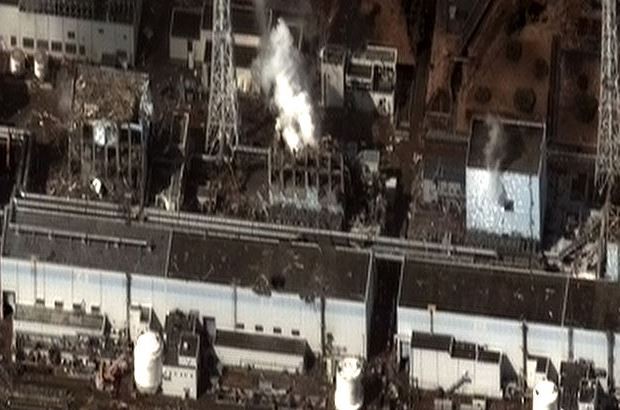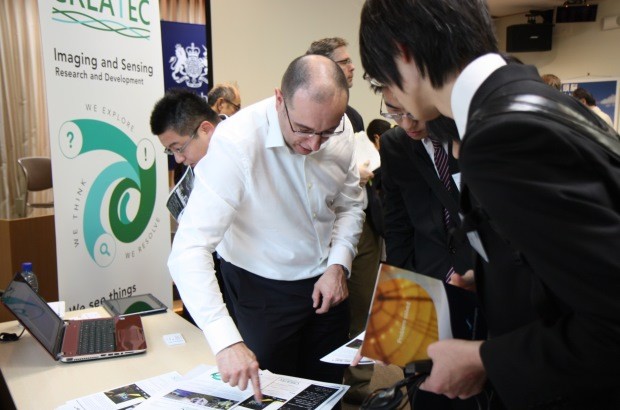
Nuclear power had been in decline for decades, but recently it has resurfaced as a viable option to meet electricity demands, proving an attractive alternative to fossil fuels. However, the 2011 Fukushima nuclear accident gripped the world’s attention and revived safety concerns over the technology. It left a large contaminated area around the Japanese plant and the country needed support to undertake a large-scale clean-up.
The international community responded quickly, with the UK supporting the clean-up by sending expert advisors. It has the world’s oldest civil nuclear industry, which began in the 1950s with the first commercial nuclear power station. Over half a century later, the UK now employs more than 60,000 highly trained workers across the entire nuclear life cycle, from the design of new plants to decommissioning and waste management.
John Clarke, the Chief Executive Officer of the UK Nuclear Decommissioning Authority (NDA), believes that the UK has a lot of expertise to offer, including the development of techniques for the retrieval of highly radioactive waste. He explains that, "the Japanese are keen to learn from other peoples experiences; they are particularly interested in learning how the UK has approached decommissioning, but also the practical hands on aspects, especially in more challenging areas".
Some of these challenges are being tackled by the UK private sector. The Cumbria-based company, Createc, has developed a camera technology for drones called N-Visage that can detect and draw a 3D map of high radiation locations that are too contaminated for human workers. It is undertaking one of eleven feasibility studies, subsidised by the Japanese government, to look at how radiation imaging can be used to locate fuel debris in the Fukushima reactor cores. Using an automated drone, they are capable of investigating the site without putting humans at risk of harmful exposure.
However, the direction of involvement is certainly not one-way. The UK has proved an attractive investment spot for Japan, with Japanese companies being the second largest overseas source of projects on UK soil.
Toshiba will help build the largest, single proposed nuclear power plant project in Europe at the Moorside site near Sellafield, UK. The three planned reactors are expected to produce a total of 3.4 gigawatts. This would fulfil around 7% of the UK’s future electricity requirements. The UK Energy Minister stated in 2014 that the, "project will bring at least £10 billion of investment and is expected to create up to 21,000 energy engineering jobs, while also providing a reliable source of low carbon energy for over six million homes.”
The Japanese multinational Hitachi has also signed similar deals at other UK sites, as well as looking at establishing research collaboration with several universities in Manchester, Birmingham and Imperial College London. This is helping to share knowledge and expertise between the two countries. For example, UK universities are sending researchers over to Japan to work in Hitachi laboratories, and learn about how the new UK reactors will work.
Professor Andrew Sherry, the Chief Scientist at the UK Government’s National Nuclear Laboratory (NNL), was on a recent visit to Tokyo promoting these collaborations. He believes that each country provides a different perspective to tackling nuclear challenges. Fukushima is an obvious example, it is a new situation that no country has been in before and therefore in need of a mixed approach. Sherry explained that, “the ability of the UK to provide creative thinking into the decommissioning process, combined with the high technical expertise and work standard provided by Japanese workers creates a great combination”.
There is also potential for collaboration in the Robotics and Autonomous Systems (RAS) technologies used for nuclear decommissioning. The aforementioned Createc is one of the many UK players working in this field. The global decommissioning market is massive and growing, it is estimated to be worth £50 billion per annum by 2020. Already, the total cost of nuclear decommissioning in the UK alone is estimated at £60 billion. This creates a lot of potential for growth, with analysis by the National Nuclear Laboratory indicating that 20% of future costs of complex decommissioning will be spent on RAS technologies.
The UK Government has recognised this and is helping to develop these new partnerships with Japan. Recently the British Embassy in Tokyo hosted a robotics week during the launch of its year-long Innovation is GREAT campaign. UK experts and companies were invited to network with key decision-making individuals from Japan, and foster future collaborations. Hopes are that the UK and Japan will continue to develop this promising relationship to meet the challenges of the future.

Emanuele Militello
Formerly Science Intern, British Embassy Tokyo
